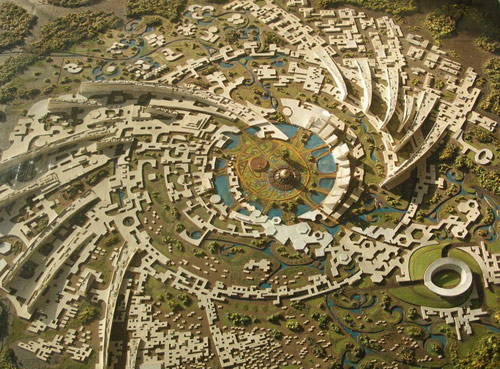Fr : version française / En: english version
Auroville: "divine anarchy"
Meanwhile, other inventions were appearing elsewhere, such as the project to build the utopian township of Auroville in southern India, embodying values inherent in the hippie movement.
Described by the city's figurehead (known as "The Mother") as "divine anarchy", Auroville was a spiritual attempt to implement the ideals of the 1970s. Hippie communitarianism engendered many more urban utopias in later years, such as Arcosanti in Arizona, a town built in the middle of the desert and designed by the architect Paolo Soleri based on the concept of "Arcology", a portmanteau of the words "architecture" and "ecology".

Based on the work of philosopher and guru Sri Aurobindo, Auroville, near Puducherry, was designed as a universal township promoting peace and harmony "above all creeds, all politics and all nationalities." The city received UNESCO support from the outset for its promotion of a cosmopolitan utopia and began to take shape in 1968 following a donation of 25 square kilometers of land by the Indian government.
According to one of its designers, the French urban planner Roger Anger, "In Auroville, the city concept goes beyond established, rigid boundaries to promote freedom of association embodied by a magnetic attraction that symbolizes its message. This focal point will be a great sanctuary, a temple of truth, which rises up in the center of the spiritual city. With this in mind, we have chosen a radiocentric layout arranged around this garden of unity."
Four zones were laid out around this spiritual hub, which was called the Matrimandir: a residential zone, an industrial zone, a cultural zone and an international zone. Today, the city has a population of just over 2,000 people, two thirds of whom are Indian; the remaining inhabitants come from 40 countries around the world.

















